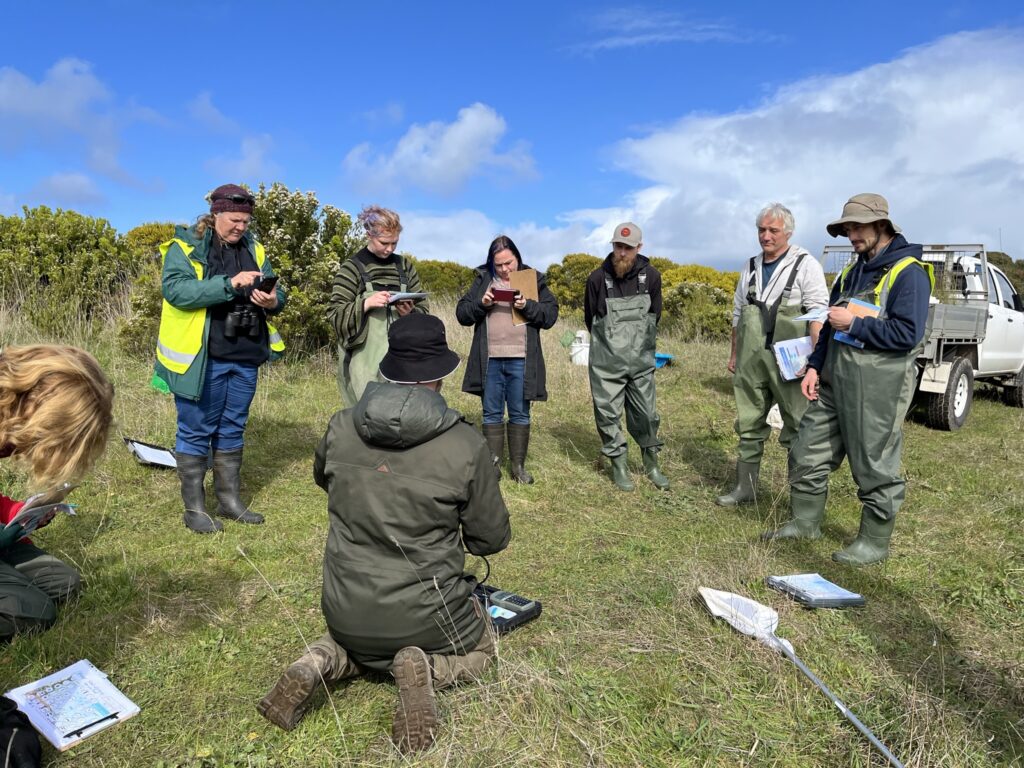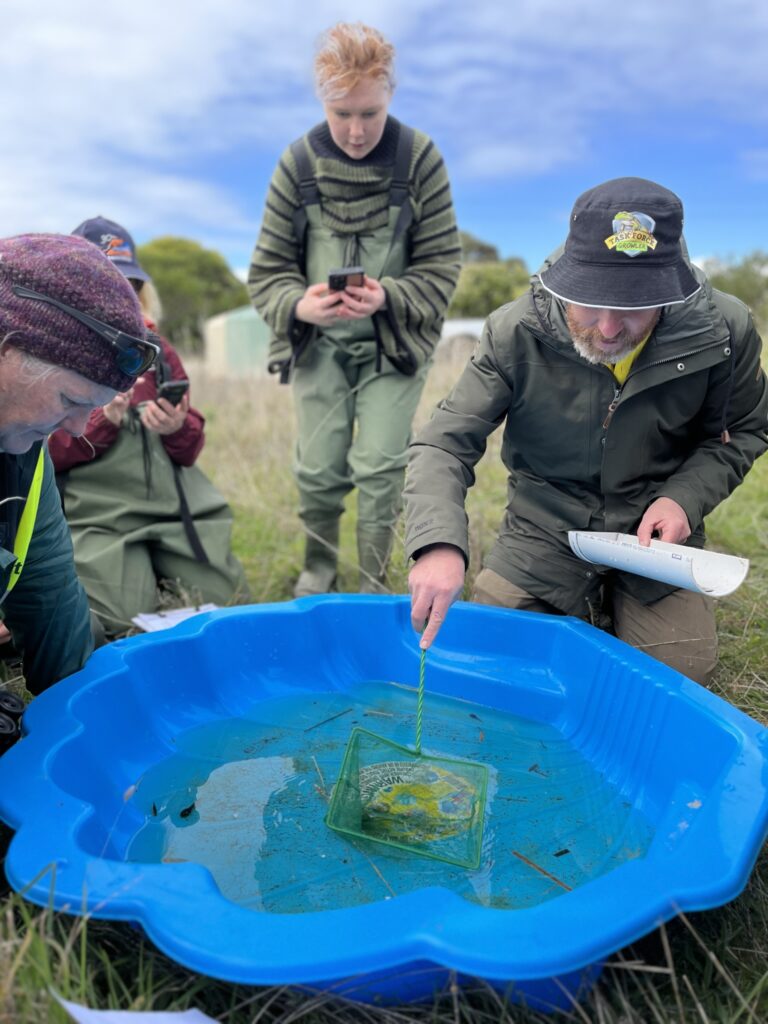A visit to Hutt Bay – ecology and education in action
Earlier this month, I visited the Hutt Bay wetlands for the first time. I joined TAFE SA students from Mt Gambier who are studying Conservation and Ecosystem Management and wanted to learn about different techniques NGT used to monitor wetland health.

Monitoring of restoration projects is hugely important, as it improves our understanding of how a wetland changes and evolves after restoration works have been undertaken. This monitoring informs the way we conduct and manage future projects. Monitoring can also identify important flora and fauna at the site that may need additional management (e.g., weeds) or may be a cause of celebration (e.g., swamp antechinus).
We started the morning with a general introduction to the site by NGT’s Principal Ecologist Lachie Farrington and Senior Ecologist Jonathon Tuck. Lachie talked about the ways he records data to track changes over time in the wetland, including water quality monitoring on site. There is a weather station at the Reserve for continuous data logging, and current weather conditions are recorded each time field surveys are conducted. The students had several questions about the processes of monitoring and shared their observations from their own wetland experience.
After the introduction on dry land, we encouraged the students to explore the site and spend some time observing on their own. Some students were fascinated by the calling frogs while others focused on the patches of different vegetation, or the diversity of birds.
Once they finished their exploration, we all headed into the swamp together.
Students collected aquatic macroinvertebrate fauna (invertebrates including insect larvae, snails, worms, etc., that are large enough to see without a microscope) and small fish with dipnets. Then we recorded which taxa were found and discussed what this means. Macroinvertebrates are a powerful tool for biomonitoring in wetlands. Certain taxa are tolerant of poor water quality conditions, and others are sensitive. If we see a lot of sensitive taxa, we can assume that the wetland is in relatively good condition.
In our samples, we found a lot of very small snails from the sediment. Snails are tolerant of low oxygen conditions such as that created by the decomposing vegetation in the wetland, and they can help with some of that decomposition process.
We were also fortunate to see several beetles, dragonflies, a damselfly and one caddisfly. Many of these are predatory taxa – a good sign of a healthy food web!
Overall, I was surprisingly pleased by the diversity of macroinvertebrates that we found during our sampling event. It will be fun to go back and sample again, particularly once it is warmer and we’re more likely to find a few more taxa.
Many thanks to the TAFE SA students for sharing their site visit with me. One of the students told us how much he had enjoyed the site visit and seeing the passion that each of the ecologists has for their area of interest. It was great to explore the site with everyone and learn about this wetland restoration project together.

